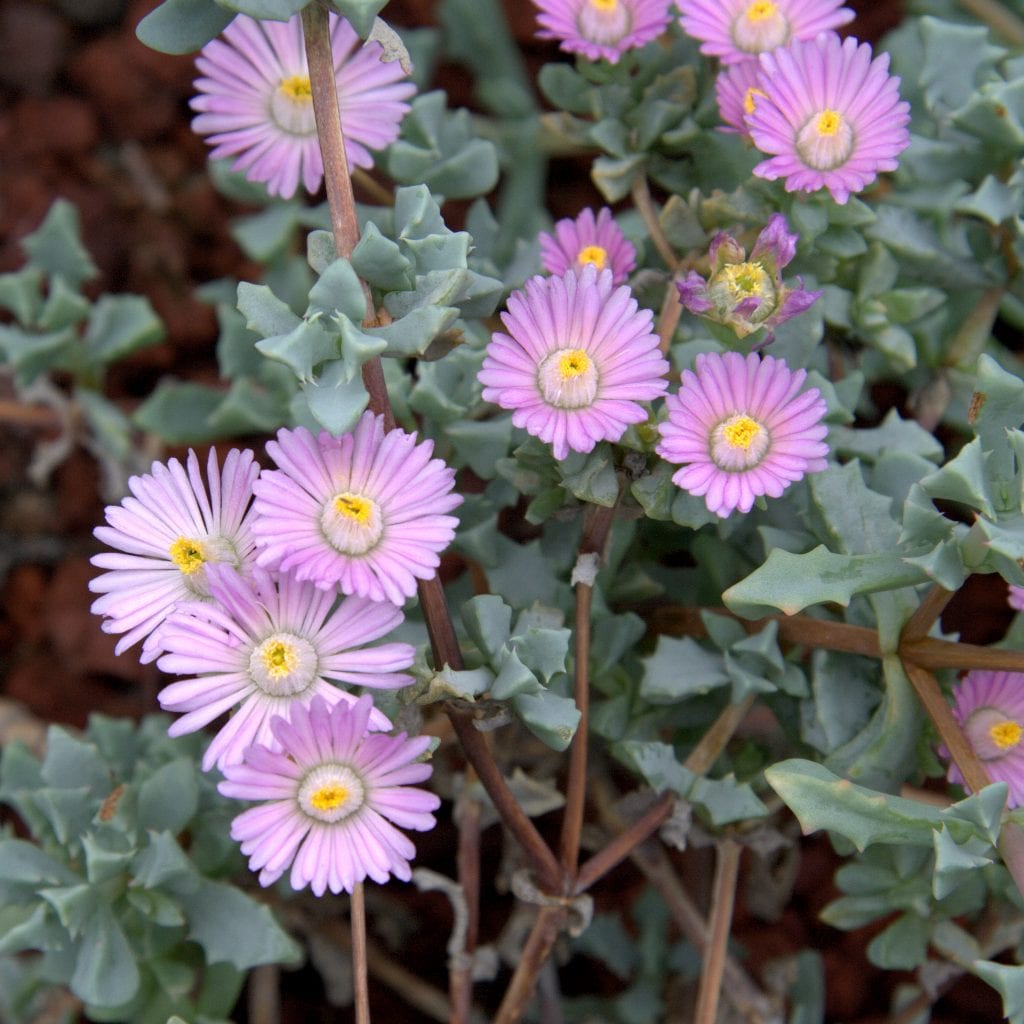
In South Africa live a number of plants that are as curious as they are beautiful. An example is the deltoid lipsa succulent that grows in the rocky mountains of the area that, when it blooms, its flowers cover it almost completely.
Although it may seem otherwise, is able to withstand mild frostsTherefore, it can be grown all year round in warm temperate climates such as the Mediterranean, as well as in tropical and subtropical climates.
Characteristics of Oscularia deltoides

The deltoid lipsformerly known as Lampranthus deltoidesis a species of perennial plant belonging to the botanical family Aizoaceae. It reaches a height of 50cm, with semi-woody stems covered by leaves that are less than 1cm long, of a grayish-green color. The flowers are purple, also small, 1cm, and open during spring and summer afternoons.
Its growth rate is quite fast, being able to occupy a 30cm diameter pot in just a couple of years. But, although it may seem otherwise, it is not an invasive plant; and in fact, if you consider that it is growing too much you can prune it at the end of winter to have it controlled.
How do you take care of yourself?

The deltoid lips It is a very easy plant to care for, so much so that it is suitable for beginners. If you would like to have a copy, follow our advice to have it beautiful:
- Location: outside in full sun; indoors in a room with plenty of natural light.
- Soil or substrate: it is not demanding, but it will grow better in those that have good drainage.
- Subscriber: in spring and summer it is recommended to fertilize with mineral fertilizers, such as Nitrofoska, filling a small spoonful and spreading the fertilizer over the surface of the substrate or soil once every 15 days.
- Pruning: in principle it is not necessary, but if it grows too much it can be pruned at the end of winter.
- Multiplication: by stem cuttings in spring-summer. They are planted directly in pots with porous substrate (akadama, pumice, perlite, vermiculite or similar), it is kept moist, and in a maximum of two weeks it will begin to root.
- Rusticity: supports weak frosts, down to -2ºC.
Did you know this plant?

